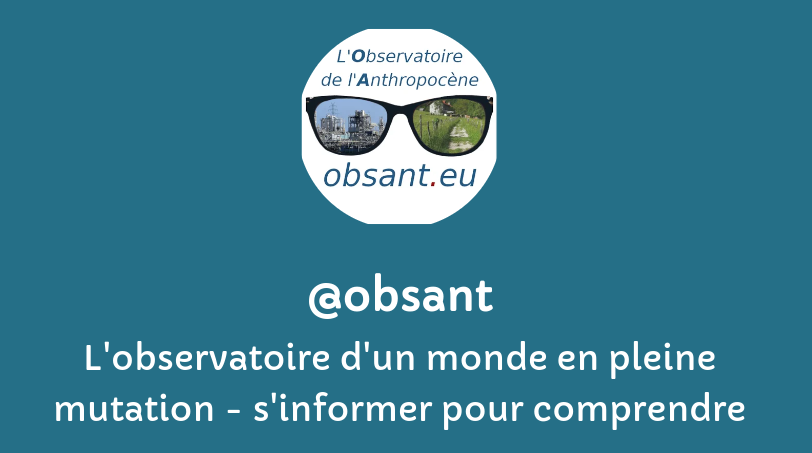Les champs auteur(e)s & mots-clés sont cliquables. Pour revenir à la page, utilisez le bouton refresh ci-dessous.
filtre:
focusclimat
The UK has announced much harsher rules for asylum seekers including the prospect of more deportations for those whose applications fail. The US is trebling the size of its deportation force. The EU is doubling its border budgets. And in the coming decades, hundreds of millions of people might be displaced by ecological changes.
Budgets are now climate policy. But mainstream media hasn’t caught up.
Around 56 million years ago, Earth suddenly got much hotter. Over about 5,000 years, the amount of carbon in the atmosphere drastically increased and global temperatures shot up by some 6°C.
Logging and mining are destroying swathes of the Congo rainforest, with the result that African forests went from being a carbon sink to a carbon source in 2010 to 2017
Exclusive: UCL scientists find large swathes of southern Europe are drying up, with ‘far-reaching’ implications
I always say that models are not predictions; they are qualitative illustrations of what the future could be. But as the future gets closer to the present, models can start being seen as predictive tools. It is the weather/climate dichotomy, so aptly exploited to confuse matters by politically minded people in the discussion about climate. Right now, we are getting close to the point that we could forecast a collapse in the same way as we can forecast the trajectory of a tropical storm. So, you remember how “The Limits to Growth” generated a long term forecast in 1972. Here it is
The growth rate of greenhouse gas (GHG) climate forcing increased rapidly in the last 15 years to about 0.5 W/m2 per decade, as shown by the “colorful chart” for GHG climate forcing that we have been publishing for 25 years (Fig. 1).[1] The chart is not in IPCC reports, perhaps because it reveals inconvenient facts. Although growth of GHG climate forcing declined rapidly after the 1987 Montreal Protocol, other opportunities to decrease climate forcing were missed. If policymakers do not appreciate the significance of present data on changing climate forcings, we scientists must share the blame.
Delegates made minimal headway on timetable for replacing oil and gas or on firm commitments to reducing carbon emissions
A deal is welcome after talks nearly collapsed but the final agreement contains small steps rather than leaps
Rain-fed agriculture, the backbone of rural livelihoods, are no longer predictable as droughts follows floods.
Exclusive interview with ex-US vice-president at Cop30 also reveals his hope around much-maligned climate summit
We are hurtling toward climate chaos. The planet's vital signs are flashing red. The consequences of human-driven alterations of the climate are no longer future threats but are here now. This unfolding emergency stems from failed foresight, political inaction, unsustainable economic systems, and misinformation. Almost every corner of the biosphere is reeling from intensifying heat, storms, floods, droughts, or fires. The window to prevent the worst outcomes is rapidly closing. In early 2025, the World Meteorological Organization reported that 2024 was the hottest year on record (WMO 2025a). This was likely hotter than the peak of the last interglacial, roughly 125,000 years ago (Gulev et al. 2021, Kaufman and McKay 2022). Rising levels of greenhouse gases remain the driving force behind this escalation. These recent developments emphasize the extreme insufficiency of global efforts to reduce greenhouse gas emissions and mark the beginning of a grim new chapter for life on Earth.
There is rising concern that several parts of the Earth system may abruptly transition to alternative stable states in response to anthropogenic climate and land-use change. Key candidates of such tipping elements include the Greenland Ice Sheet, the Atlantic Meridional Overturning Circulation, the South American monsoon system and the Amazon rainforest. Owing to the complex dynamics and feedbacks between them via oceanic and atmospheric coupling, the levels of anthropogenic forcing at which transitions to alternative states can be expected remain uncertain. Here we demonstrate how such interactions can generate spurious signals and potentially mask genuine signs of destabilization. We further review and present observation-based evidence that the stability of these four tipping elements has declined in recent decades, suggesting that they have moved towards their critical thresholds, which may be crossed within the range of unmitigated anthropogenic warming. Our results call for better monitoring of these ti
James Hansen - Climate Reckoning in ATLAS25, Operaatio Arktis, Helsinki, Finland
Money talks – and his essay denouncing ‘near-term emissions goals’ at Cop30 mostly argues the case for letting the ultra-rich off the hook
Decision by international court of justice hailed as a gamechanger for climate justice and accountability
Gates recently called for a ‘strategic pivot’ in climate strategy. That appears to have hit a nerve.
“I suppose it is tempting, if the only tool you have is a hammer, to treat everything as if it were a nail.” Thus wrote the famous psychologist Abraham Maslow in 1966.
The 2024 ‘State of the climate’ report says climate scientists are more worried than ever and calls for ‘transformative science-based solutions across all aspects of society.’
On this day, October 27, 1990, the British Magazine the Economist had a cover story about “global warming” and international agreements.
![]()



